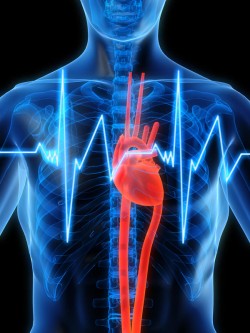
I remember when he was five and his biggest concern was getting the latest dinosaur toy. Now Josh is 15, and he’s just so different lately.
I don’t expect him to be five anymore, but the changes I’m seeing…I’m concerned. He’s lost interest in soccer, started hanging out with a new crowd, and he’s just so moody. Is this normal teen trouble, or should I be worried about drug abuse?
This mom is rightfully concerned. If there’s one thing we all know is true, it’s that the teen years typically involve some moodiness and unpredictable behavior. After all, these kids are a cocktail of hormones, and they’re trying to figure out their place in the world.
But still, there are some behaviors that go beyond the norm. And these behaviors could indicate opioid abuse.
Signs Your Teenager is Abusing Opioids
Be on the lookout for the following warning signs:
- Severe Mood Swings
 Teenagers whose moods and personalities change suddenly and drastically are potentially under the influence of opioid abuse. These mood swings are more severe than your typical teenage drama. If your teen is abusing opioids, he might become depressed and withdrawn or angry and hostile (or all of the above). He may even get violent or threaten other family members.
Teenagers whose moods and personalities change suddenly and drastically are potentially under the influence of opioid abuse. These mood swings are more severe than your typical teenage drama. If your teen is abusing opioids, he might become depressed and withdrawn or angry and hostile (or all of the above). He may even get violent or threaten other family members.
- Loss of Interest
Teens who become addicted to opioids may lose interest in the things that used to bring pleasure. School, sports, friends, work, and other interests can quickly fall by the wayside. He may lack motivation to fulfill obligations and start to withdraw from extracurricular and other social activities. Grades may drop. If your teen has become apathetic and unmotivated – and there is no other clear reason for the abrupt change – it could indicate your child is struggling with opioid abuse.
- Physical Changes
Opioid abuse takes its toll on the body. Physical symptoms can include constricted pupils, constipation, flushed cheeks, and slowed breathing. Your teen may also experience drowsiness or sudden bursts of energetic euphoria. You may also notice a lack of energy and poor eating habits.
If your teen is abusing opioids, he may experience withdrawal when unable to get his hands on a drug of choice. Opioid withdrawal symptoms include sweating, nausea, headache, diarrhea, insomnia, body aches, and anxiety.
Opioid abuse can also affect your teen’s appearance. No matter their age, people who are addicted to opioids eventually tend to neglect their appearance. They may care less about bathing and brushing their teeth; many wear the same dirty or wrinkled clothes for days on end.
- A Group of New “Friends”
Teen social circles change on a dime. But if your teen starts to hang out with a new crowd for no apparent reason, it might be due to drug use. Keep in mind that this shift in relationships can happen gradually or suddenly. He may let old friendships die off as they drift toward other teens using the same drugs. Or, he might make a drastic shift into a whole new friend circle. Either way, this could be a warning sign that he’s mixed up in the drug scene.
- Opioid Drug Paraphernalia
If you find drug-related items in your teen’s possession or in his room, this is an obvious red flag. Opioid paraphernalia may include needles, lighters, pipes, and, of course, the actual drugs. If your teen isn’t abusing the drugs, he definitely knows someone who is. It’s highly unlikely he’s just the innocent bystander holding someone else’s supplies, but isn’t doing the drugs himself. The important thing to remember is you can’t afford to dismiss opioid paraphernalia as insignificant.
What If You Notice the Warning Signs?
At the end of the day, if you notice the warning signs your teen is abusing opioids, you have one pro-active choice: talk to your teenager.
If you’ve noticed physical symptoms, suggest taking him to the doctor for a check-up. Resistance to a routine exam may be further indication that your teenager is abusing opioids.
Interact with him after he’s been hanging out with friends. This can help you pinpoint signs of drug use (if that’s what they’ve been doing in their new social circle).
Ask about his behavior changes. Let him know your concerns. Yes, it’s a hard conversation to have, but ignoring the issue isn’t in his best interest. Take action as soon as possible, so, if he is abusing opioids, he can get the help he needs.
Get help today at 800-934-1582(Sponsored) to learn about treatment programs for drug and alcohol addiction.

Waiting on a loved one to hit “rock bottom” before getting help for an addiction is not only harmful, it is potentially lethal. While we may have been encouraged to proceed with tough love by not “enabling” a loved one, we can inadvertently push them further into their addiction.
Instead, a more helpful approach would be to ignore the harmful rhetoric and intervene at a much earlier stage – like the grey area. It gives your loved one better chances of staying alive, and it can also prevent them from doing so much damage in the process.
Don’t Wait for Rock Bottom
I have been to countless AA meetings where the pervasive “rock bottom” myth is repeated over-and-over. The belief of many in the 12-step community is that you have to reach the depths of addiction before you can finally surrender to the disease and get help.
“He needs to go out and do more research,” Malcolm explained to me in a meeting in response to a newcomer who had relapsed. I couldn’t quite believe that a member of AA, whose only requirement of membership is a desire to stop drinking, was encouraging someone to go back to drinking until they had truly had enough.
But I experienced this more times than I wish to recall.
The reality is that not everyone reaches a rock bottom. Some people die before they reach rock bottom. Others find themselves facing a host of dangerous and life-threatening situations, such as:
- Overdose
- Buying substances laced with fentanyl
- Using alone
- Experiencing homelessness because a misguided parent kicked them out
- Not carrying naloxone because a loved one believes it enables drug use
People with substance use disorders really don’t need to be pushed to those depths. Instead, we could reach them much earlier at the gray area.
What is Gray Area Drinking?
Alcohol use disorder exists on a spectrum: from the gray area (less severe) to the more acute stages (rock bottom). About 90 percent of people who drink problematically do not have severe AUD, according to the Centers for Disease Control and Prevention.
Gray Area Drinking expert, Jolene Park explains:
“We’re all familiar with the rock-bottom kind of drinking that ruins too many lives. On the other end of the spectrum, there are those who rarely drink. If you fall in between those two extremes you might identify as a gray area drinker.”
Key signs of gray area drinking, as highlighted by Park, can include:
- Intending to have one glass of wine but finishing a bottle
- Stopping drinking for periods of time but returning because you think you have control
- Thinking and rationalizing your drinking
- Allowing drinking to prevent you from achieving the life you want
Intervening in the Gray Area
Reflecting on my own drinking, I wish I’d had an intervention at an earlier stage. I drank problematically from the time I was 13 years old.
To the outside world, I appeared to have it all: a bachelor’s degree, a place to live in the city, and a good job. On the outside, I had made it. But internally, I was progressively crumbling, over two decades.
I went from drinking a bottle of wine after work (stopping occasionally) to losing all control. I was drinking around four bottles of wine a day toward the end of my addiction. If I’d had an earlier intervention where I knew that I didn’t have to sit in a church basement and listen to sad stories, I might have gotten help much sooner.
I know that is easier said than done. As a family member, you may be afraid to confront the person dependent on alcohol or drugs. Or you may have trusted the familiar sayings in the rooms of Alanon where a family member reaches a magical “rock bottom” and instantly asks for help.
Don’t Put the Intervention Off
The reality is that If loved ones wait too long, it may actually be too late. Here are some ways you can support your loved one by intervening long before that rock bottom moment manifests:
- Model alcohol free social events: suggest to your loved one that you go for a coffee date instead of hitting a bar.
- Ask if you can cook them dinner as you’d like to discuss something on your mind. Don’t confront them, but ask them if there is anything they’re struggling with and if you can better support them.
- Tell them that you are concerned about their drinking, but not in a confrontational way. Perhaps you could say that you have noticed they’re drinking more than usual and you wondered if everything is OK. Practice active listening rather than trying to solve their problems. Ask them what their options are and if there is anything you can do.
- Be prepared by educating yourself about AUD and the options available. Ensure you have these resources to hand:
- Guidelines on normal drinking limits.
- Look for gray area digital recovery options, like Tempest, Jolene Park’s Gray Area Coaching, This Naked Mind, Workit Health.
At the end of the day, you have to decide if you’d rather overcome the anxiety of approaching the subject or deal with the shame and regret of a loved one losing his or her life to addiction. Don’t delay; intervene today.
If you or someone you love is experiencing a substance use disorder, help is available. Call 800-934-1582(Sponsored) today.

The U.S. continues to not only fight the COVID-19 pandemic, it is now also grappling with some major supply chain issues that are leaving the country in chaos. Caused in part by the pandemic, disruptions to the global supply chain are responsible for gridlock in ports, material scarcity, bare shelves in grocery stores and prison commissaries, increasing freight prices, and a huge shortage of workers.
Not surprisingly, there are a lot of stressed workers, unhappy customers, and anxious companies watching their profits dwindling. But plenty of Americans are also faced with health-related consequences as alcohol and other pharmaceuticals are among many of the products delayed.
For people struggling with alcohol use disorder and health conditions like opioid addiction, this is having a visible impact.
A Time of Uncertainty
Jake Duke, a regional manager of Spec’s Liquor told ABC News: “We had 50 people waiting in line, just to see what we had coming in this morning because it’s a guessing game for us, just as it is for the guest.”
 He shares his frustration about this supply chain uncertainty, “They don’t know what’s coming. We don’t know what’s coming,” he said.
He shares his frustration about this supply chain uncertainty, “They don’t know what’s coming. We don’t know what’s coming,” he said.
Last week, the American Medical Association called the supply chain issues an urgent healthcare crisis, as the Food and Drug Administration announced 115 drugs are in short supply nationally. Those drugs include chemotherapy, Adderall, insulin, oxycodone, and some anxiety medications.
Heading the writing on the wall – and experiencing their own supply chain delays – pharmacists warn hundreds of medicines could be placed on backorder at any time.
So what are the implications? Well, those with substance use disorders could face some pretty severe consequences if suddenly forced to stop certain medications. And withdrawal symptoms are one of those consequences.
The Risk of Suddenly Stopping Medication
To abruptly stop using opioids, including prescription opioids that are in short supply, can cause withdrawal symptoms, including (but not limited to) flu-like symptoms, stomach ache, vomiting, diarrhea, muscle aches, anxiety, restlessness, inability to sleep, high blood pressure, runny nose, rapid heartbeat, visual disturbances, and excessive sweating.
For those struggling with severe alcohol addiction who face a lack of supply, the results could be potentially deadly. People who are used to drinking large amounts of alcohol have likely developed a dependence. If they stop drinking (also known as “going cold turkey”) they can experience seizures and delirium tremens — a life-threatening condition that can cause tremors, shaking, confusion, hallucinations and can lead to a heart attack, stroke, or even death.
Risk factors for those who stop drinking and develop delirium tremens include:
- Adult men
- People with a history of seizures
- Those with have experienced alcohol withdrawal previously
- Heavy and long-term drinkers: defined as men who drink more than 14 drinks per week and women who drink more than 8 alcoholic drinks per week.
Why is America Experiencing Supply Chain Issues?
According to the Economist, the main reason for the supply chain problem is the pandemic. After $10.4 trillion in global stimulus money was distributed, it resulted in people buying more goods and services than ever, putting a major strain on supply chains globally.
However, the pandemic also caused a serious manufacturing problem; some goods can’t be made as quickly and efficiently as others. Electronics and clothing are stuck because of industrial shortages in microchips in places like Taiwan, and the Delta variant has closed down clothing factories in other parts of Asia.
When goods are eventually sent to the U.S., we don’t have enough truck drivers to deal with the huge demand to get goods to customers. Companies are now struggling to fill these service jobs and, despite hefty signing bonuses for truck drivers, we are still in need of tens of thousands of truck drivers to make up the supply chain short fall.
Ending Supply-Related Withdrawal Symptoms
While shopping and nice-to-have items are one thing, life-saving medications and substances that people are dependent on are a much more serious problem.
 If you go to a hospital, you don’t expect to find out they’re out of a drug that can save your life. Or if you have a prescription for a medication that keeps chronic pain at bay, that you’ll suddenly be left with excruciating pain and withdrawal symptoms. So what’s the answer?
If you go to a hospital, you don’t expect to find out they’re out of a drug that can save your life. Or if you have a prescription for a medication that keeps chronic pain at bay, that you’ll suddenly be left with excruciating pain and withdrawal symptoms. So what’s the answer?
According to the Harvard Business Review, the U.S needs to reimagine its pharma supply chain. They say we’re in this situation because of a poorly designed global supply chain, despite relying on it for our nation’s most essential medical needs. While it’s an intolerable, and potentially dangerous situation for millions of Americans, they say it need not be this way if we fulfill the production of vital medicines within the U.S. instead of abroad.
The U.S. is too dependent on global production and supply of these medicines. When something goes wrong, like a pandemic, we’re left struggling to meet the needs of our nation.
The answer, HBR says, is to stop relying on China and India for medicine materials — where 80 percent of active medicine ingredients come from — and start making these medicines in the U.S.
If you or someone you love is experiencing a substance use disorder, help is available. Call 800-934-1582(Sponsored) today.
Images Courtesy of Pixabay

“Two out of every five fentanyl pills that we are seizing are a lethal dose.” – Kyle Williamson, Special Agent, El Paso Drug Enforcement Agency
It’s unprecedented. Fentanyl seizures by the El Paso DEA are up over 524%, and methamphetamine seizures are up over 200%.
These numbers were reported by Kyle Williamson, a recently retired Special Agent with the El Paso Drug Enforcement Agency. Why the massive increase? Williamson says one of the main reasons is the influx of fentanyl streaming across the southern border. The demand for opioids in the U.S. is high, so the supply is coming in to meet it.
But…people aren’t getting the drugs they might expect. Often, the drugs are counterfeit fentanyl pills manufactured in Mexico. These lethal-dose pills are disguised to look like regular Oxycodone that a person might get from their doctor.
The result? Overdose deaths are on the rise. The CDC reported a staggering 96,779 drug overdose deaths across the nation in the 12-month period ending March 2021. In the 12 months prior to that, there were 74,679.
Williamson stressed the importance of educating people about the deadliness of fentanyl, especially since these pills become so easy to access. He notes, “They are distributed through social media, they’re on the streets, they’re in the schools…they’re everywhere.”
Why is Fentanyl So Deadly?
 Fentanyl is 100 times more powerful than morphine. With proper medical monitoring, it is possible to use this controlled substance safely for severe pain relief. But…that’s not exactly what’s happening with smuggled drugs.
Fentanyl is 100 times more powerful than morphine. With proper medical monitoring, it is possible to use this controlled substance safely for severe pain relief. But…that’s not exactly what’s happening with smuggled drugs.
Dealers mix fentanyl with other substances to make their product more powerful and cheaper to produce.
Since just two milligrams of fentanyl can be fatal, the drug concoctions that dealers are putting in people’s hands are often far deadlier than people realize. The U.S. DEA has come across counterfeit pills stuffed with more than 5.1 milligrams of fentanyl each.
Of course, someone can take a pill without realizing it contains any fentanyl. Or, they may take a pill knowing it contains the powerful drug, but not know just how much they’re getting in that little pill. It’s not as if there’s quality control or oversight of smuggled drug production. If drugs are purchased on the black market, there’s no way to know exactly what’s in them – until it’s too late.
A Spreading Poison
Williamson and other El Paso officials have noticed the uptick in smuggling and overdoses, but the problem isn’t just at the border. DEA Acting Administrator Christopher Evans noted, “While a major entry point for fentanyl is the Southwest border, the cartels are spreading their poison into communities across the nation.”
In an effort to stop this spread, the DEA launched Project Wave Breaker. This initiative “aims to reduce the amount of fentanyl coming across the Southwest border, reduce crime and violence associated with drug trafficking, and ultimately save lives by reducing the demand for illicit fentanyl.”
Launched in April of 2021, Project Wave Breaker involves outreach and enforcement efforts to stop the flow of fentanyl. It will also target Mexican criminal organizations, who are known as the biggest suppliers and distributors of this drug in the United States.
What Else Can be Done About Fentanyl?
Well, we can apply some basic economic principles, even if the business is illegal (and deadly). It’s basic supply and demand. The demand is high, so the supply has risen. We need to reduce the demand.
As Williamson noted, education is key. That means continuing to educate people about fentanyl and how smugglers are sneaking it into illegal substances in deadly amounts. By taking even one pill, people are taking their lives into their own hands.
Would some still take the risk? Possibly. But hopefully the increased awareness will give people pause and prevent some of the overdoses we’re seeing across the country.
Meanwhile, initiatives like Project Wave Breaker will continue to attack the problem from the legal side. Last year, officials involved in the project seized a total of 2,316 kilograms of fentanyl. That’s enough lethal doses to kill more than a billion people.
For information about treatment options for you or a loved one, call 800-934-1582(Sponsored) today.
Images Courtesy of Pixabay
You may have heard about the opioid crisis, and could be wondering, what are opioids, and is heroin an opioid? The dangers of heroin and opioids continue to take a toll on America. In 2020, more than 70,000 people in the U.S. died from opioid overdoses, with heroin accounting for 13,000 of those deaths.1 Having a better understanding of heroin and opioids may help you avoid addiction or encourage you to seek help if you need it.
In This Article:
- What Are Opioids, and Is Heroin an Opioid?
- What Are the Effects of Heroin?
- What Are the Dangers of Long-term Heroin Use?
- Heroin vs. Opioid Medications
- Heroin Use and Overdose
- Help for Heroin Addiction
What Are Opioids, and Is Heroin an Opioid?
Opioids are a class of drugs that interact with the opioid receptors in your brain.2 These receptors are connected to your brain’s reward system. When stimulated, the opioid receptors create a loop that links the stimulus to pleasure. It’s this system that makes opioid drugs very addictive.2
Some opioids are prescribed as medications. These include oxycodone (OxyContin), hydrocodone (Vicodin), codeine, morphine, and others. Heroin is also an opioid but it has no medicinal purpose. For this reason, it is listed as a Schedule 1 narcotic by the U.S. Drug Enforcement Administration (DEA). Schedule 1 drugs are substances that have a high potential for abuse and no accepted medical use.3
Prescription opioid medications are classified as Schedule 2 drugs because they do have an accepted medical use, but they also have a high potential for abuse that can lead to addiction. 3 Several types of Schedule 2 opioid medications account for a large proportion of overdose deaths. These include fentanyl, oxycodone, morphine, methadone, and hydrocodone.4
Regardless of intended purpose, opioids and heroin create a euphoric ‘reward’ experience in your brain.2 Opioid medications may be safe if you used them as prescribed by your doctor for a short period. However, if using them for two weeks or longer, you may become physically dependent on them.5
What Are the Effects of Heroin?

Heroin and opioid misuse can lead to depression, withdrawal from life, and many other harmful effects.
Heroin is a highly addictive, illegal drug derived from certain varieties of poppy plants. Pure heroin is a white powder that is made primarily in South America and areas of Asia and smuggled into the U.S. It is normally snorted or smoked. Black tar heroin is made mostly in Mexico. The dark color comes from crude processing methods that leave behind impurities. Black tar heroin is usually diluted and injected into the body.6
After heroin is snorted, smoked, or injected into the body, it is converted to morphine, binding to opioid receptors in the brain and nervous system.6 The effects of heroin and opioids include blocking pain, increasing feelings of pleasure, and slowing down breathing and heart function.6 During an overdose, a shortage of oxygen to the brain can lead to coma, permanent brain damage, or death.6
People who struggle with heroin use will experience two stages of addiction—the short-term highs and the long-term lows.
Initially, heroin opioid use delivers a “rush” of pleasure, also called a euphoric high. Still, even in the short term, taking heroin can trigger unwanted side effects such as:7
- Dry mouth
- Warm flushing of the skin
- Heavy arms and legs
- Nausea
- Vomiting
- Severe itching
- Brain fog
- Drifting between a conscious and semiconscious state
Over time, heroin use may result in more severe side effects. Long-term heroin use can lead to:8
- Insomnia
- Collapsed veins (if you regularly inject heroin)
- Damaged nasal tissue (for those who snort heroin)
- Valve and heart lining infections
- Abscesses (swollen, pus-filled areas of skin)
- Chronic constipation
- Stomach cramps
- Kidney and liver disease
- Lung disease and complications
- Depression
- Antisocial personality disorder
- Sexual dysfunction for men
- Irregular menstrual cycles for women
What Are the Dangers of Long-term Heroin Use?
Repeated use of heroin changes the physiology of the brain, creating imbalances in the body’s neuronal and hormonal systems.6 Studies have shown that prolonged heroin use results in deterioration of the brain’s white matter.9 This may detrimentally affect a person’s ability to control their behavior, respond to stressful situations, and make decisions. 9 During an overdose, a shortage of oxygen to the brain can lead to coma, permanent brain damage, or death.8
People who use heroin and opioids through injection are also at risk of contracting infectious diseases such as hepatitis and HIV/AIDS, if sharing non-sterile needles.6 Use of heroin during pregnancy can lead to a baby born with fetal effects.6
Since 2007, heroin use in the U.S. has steadily increased. In 2016, approximately 948,000 Americans reported using heroin in the past year, and 626,000 met the criteria for heroin use disorder.7 The age group driving this increase the most is 18–25 year-olds.7
It appears this trend is related to the widespread misuse of opioid pain killers in the U.S.6 After becoming dependent on opioid medications, many turn to the more readily available—and more affordable option—heroin.6
Heroin Dependency and Addiction
Heroin dependency can happen quickly, after just two weeks of using the drug.5 Dependency means you will experience withdrawal symptoms, which normally occur 24-48 hours after the last dose.5
Signs of heroin and opioid withdrawal include:5
- Restlessness
- Muscle and bone pain
- Problems sleeping
- Diarrhea
- Vomiting
- Cold flashes
- Goosebumps
- Leg movement you can’t control
- Severe cravings for heroin
Using heroin and opioids regularly can also cause you to develop tolerance.6 This is when you need to take larger and more frequent doses of heroin to experience the high you used to get from smaller, less frequent doses.
Once you become dependent on heroin or other opioid drugs, you may develop an addiction, which is defined clinically as an opioid use disorder (OUD). This is when having and using heroin becomes the central focus of your life. A person is diagnosed as having an OUD when some of the following signs are present within a 12-month period:10
- Taking heroin in larger amounts or for longer than prescribed
- Wanting to reduce or stop using heroin but not managing to
- Spending a lot of time getting, using, or recovering from heroin use
- Having cravings and urges to use heroin
- Experiencing withdrawal effects when stopping heroin use
- Needing to use heroin in larger amounts to attain the effects your experienced when you first started using it
- Not living up to obligations at work, home, or school because of heroin use
- Continuing to use heroin despite the problems it causes problems in relationships
- Giving up important social, occupational, or recreational activities because of heroin use
- Using heroin even in situations where it is dangerous to do so
- Continuing to use heroin when you know you have a physical or psychological problem that could have been caused or made worse by the drug
An OUD diagnosis is ranked by severity according to the number of symptoms listed above that a person has. Having 2-3 symptoms indicates a mild OUD, 4-5 symptoms indicates a moderate OUD, and 6 or more symptoms indicates a severe OUD.10
Heroin vs. Opioid Medications
Because heroin and opioid medications have the same effects on the body, more people are misusing both types of drugs.6 Some people may turn to heroin after their prescription for an opioid medication runs out and they are unable obtain more prescriptions. Evidence suggests that almost 80% of people who have used heroin previously misused prescription opioid medications.11
On the other hand, some people may start with heroin and turn to stronger opioids, such as fentanyl, after developing a tolerance to heroin. This is indicated by studies showing that about 33% of people entering opioid addiction treatment misused heroin before misusing opioid medications.12
The severity of effects can change when using heroin vs. opioid substances. Turning to stronger opioid drugs such as fentanyl is even more risky than using heroin. Fentanyl, a synthetic opioid often made illegally, is 50 times more potent than heroin.7 This is one reason fentanyl has become the leading cause of drug overdose in the U.S. In 2020, 57,000 people in the U.S. died from overdoses involving fentanyl.13 Some of these deaths are likely due to dealers cutting drugs like heroin or cocaine with fentanyl, since all of these substances come in the form of white powder. In such cases, it’s impossible for a buyer to know if heroin has been mixed with more potent drugs such as fentanyl.3
Heroin Use and Overdose
While fentanyl has become the No. 1 drug to cause overdose deaths, heroin is close behind. In 2019, nearly a third of all overdose deaths in the U.S. involved heroin.14
When a person overdoses on heroin, it means the amount of heroin they have used is more than their body can manage, resulting in death or a life-threatening condition. During an overdose, a shortage of oxygen to the brain can lead to coma, permanent brain damage, or death.6 Mixing heroin with alcohol, other opioid drugs such as fentanyl, or other drugs including benzodiazepines can also lead to overdose more easily than many people may realize.6
What does a heroin overdose look like? After using too much heroin or opioid drugs, your breathing may slow or even stop. This cuts off oxygen to your brain—a condition known as hypoxia. So, even if you survive an overdose, you may emerge with permanent damage to your brain and nervous system.8 Alternatively, you may remain in a coma due to the effects of hypoxia.8
An overdose from heroin and opioids can be treated, if done immediately, with a medication called naloxone. It is available as an injectable medication, used by emergency medical personnel, or as a nasal spray, available to consumers. In either form, this medication binds to opioid receptors, which blocks the effects of heroin or other opioids, reversing overdose symptoms.15
Naloxone in the nasal spray form is available in some states without a prescription. If the state you live in requires a prescription, ask your primary doctor for a naloxone prescription if you are concerned that you or a loved one may be at risk for opioid overdose. Be sure you know in advance how to properly use naloxone. Keep in mind that naloxone only works on overdoses caused by heroin or other opioids.15
More than one dose of naloxone may be necessary to help you breathe after an overdose, and other medical care may be required. For these reasons, always seek immediate emergency medical care for an overdose.
Help for Heroin Addiction
If you struggle with heroin and opioid use, help is available. Today, a range of effective treatment options, including medication and different forms of therapy, are used to help people stop using heroin.8 Because of the variety of opioid and heroin treatment options available, you can find treatment that meets your specific needs and preferences.
Medications for Heroin Addiction
To help you through the withdrawal process, when detoxing from heroin and opioids, your treatment specialist may prescribe lofexidine.8 This is an FDA-approved, non-opioid medicine that reduces opioid withdrawal symptoms.8
There are also opioid agonist medicines, such as buprenorphine and methadone, that can help you stop using heroin.8 These medications also bind to your brain’s opioid receptors, but they do so in a weaker way than heroin, so they may reduce your heroin cravings and lessen your withdrawal symptoms.8
Alternatively, your doctor may recommend naltrexone, a medication that blocks opioid receptors.8 When you take naltrexone, opioid drugs will not affect your body.
Studies show that buprenorphine/naloxone combinations are similarly effective to solo use of extended-release naltrexone.8,15
Behavioral Therapy During Opioid Addiction Treatment
In addition to medications, your treatment program may involve behavioral therapies for heroin addiction. Two popular methods often used in addiction treatment are cognitive behavioral therapy (CBT) and contingency management.8
With CBT, you learn to change your thoughts about drug use and your behaviors surrounding heroin misuse. In this way, you can learn to effectively manage your drug-use triggers so that you don’t relapse in times of stress.8
With contingency management, you can earn motivational incentives, such as vouchers or small cash rewards, when you engage in positive behaviors by avoiding heroin and opioid use to maintain sobriety.8
A variety of other types of therapy for opioid addiction, including holistic approaches, are available in many treatment centers today. The methods of therapy that work best for you will depend on your individual situation and personality. What is most important to know is that behavioral treatment is highly effective when combined with medication for heroin addiction.8
For more information about treatment for heroin dependency, or to find a treatment center that meets your needs, call
800-934-1582(Sponsored)
today.
References
- Centers for Disease Control and Prevention. (2021, August 1). Provisional Drug Overdose Death Counts. National Center for Health Statistics.
- Merrer, J. L., Becker, J. A. J., Befort, K., & Kieffer, B. L. (2009). Reward Processing by the Opioid System in the Brain. Physiological Reviews, 89(4), 1379–1412.
- Drug Enforcement Administration. (2020). Drugs of Abuse: A DEA Resource Guide/2020 Edition. U.S. Department of Justice.
- Centers for Disease Control and Prevention. (2019, October 25). Regional Differences in the Drugs Most Frequently Involved in Overdose Deaths: United States, 2017. National Vital Statistics Reports, 68(12).
- Johns Hopkins Medicine. Opioid Addiction. The Science of Addiction.
- Volkow, N.D. (2014). Heroin. Research Report Series. National Institute on Drug Abuse.
- National Institute on Drug Abuse. Heroin Research Report: What is the scope of heroin use in the United States? National Institutes of Health.
- National Institute on Drug Abuse. (2020, July 24). Heroin DrugFacts. National Institutes of Health.
- Qiu, Y., Jiang, G., Su, H., Lv, X., Zhang, X., Tian, J., & Zhuo, F. (2013). Progressive white matter microstructure damage in male chronic heroin dependent individuals: a DTI and TBSS study. PloS One. 8(5).
- American Psychiatric Association. (2013). Diagnostic and Statistical Manual of Mental Disorders (5th ed.).
- Cicero, T. J., Ellis, M. S., & Kasper, Z. A. (2017). Increased use of heroin as an initiating opioid of abuse. Addictive Behaviors, 74:63-66.
- Carlson, R. G., Nahhas, R. W., Martins, S., & Daniulaityte, R. (2016). Predictors of transition to heroin use among initially non-opioid dependent illicit pharmaceutical opioid users: A natural history study. Drug and Alcohol Dependence, 60:127-134.
- Centers for Disease Control and Prevention. (2021, August 8). Provisional Drug Overdose Death Counts. National Center for Health Statistics.
- Centers for Disease Control and Prevention. (2021, March 5). Drug Overdose: Heroin Overdose Data.
- National Institute on Drug Abuse. (2021). Opioid overdose reversal with naloxone (Narcan, Evzio).
- Lee, J. D., Nunes, E. V., Mpa, P. N., Bailey, G. L., Brigham, G. S., Cohen, A. J., Fishman, M., Ling, W., Lindblad, R., Shmueli-Blumberg, D., Stablein, D., May, J., Salazar, D., Liu, D., & Rotrosen, J. (2016). NIDA clinical trials network CTN-0051, extended-release naltrexone vs. buprenorphine for opioid treatment (X:BOT): Study design and rationale. Contemporary Clinical Trials, 50:253-64.
From 1999 through 2019, 840,000 people in the U.S. died from a drug overdose.1 Misusing certain drugs may be more harmful than others, which is why it’s important to be aware of life-threatening drugs and of deadly drug interactions.
You may ask yourself, “What is the most deadly drug?” Based on statistics from the Centers for Disease Control and Prevention and the Drug Enforcement Administration, the following substances represent the top 10 entries on the most dangerous drug list.
In This Article: Top 10 Killer Drugs
1. Nicotine
Nicotine is a stimulant drug found in cigarettes and other forms of tobacco, including cigars, snuff, and most e-cigarettes.2 In the U.S., it is illegal to sell nicotine products to anyone under the age of 21.3
When used by people under the age of 25, nicotine can change your brain chemistry, affecting your mood, attention span, and your ability to learn or control impulses.4
Nicotine products contribute to nearly 500,000 deaths each year in the U.S., with at least 41,000 resulting from secondhand smoke.5 Around the world, tobacco products contribute to 7 million deaths each year, making it the most dangerous drug per capita in many countries.6 However, quitting smoking before the age of 40 can reduce your risk of nicotine shortening your life by 90%.7
Acting as both a stimulant and a relaxing agent, nicotine is an addictive substance.5 When consumed in most tobacco products, dangerous smoke and other chemicals are introduced into your body, concentrated in your throat and lungs. Nicotine products increase your risk for stroke, heart disease, lung cancer, and chronic obstructive pulmonary disease (COPD).5
From FDA-approved medications to quit-smoking apps and conversations with medical professionals, help for nicotine addiction is available and effective.8, 9 These methods have helped 3 out of every 5 adult smokers who attempt to stop using nicotine successfully quit.9
2. Alcohol
Each day in the U.S., 261 people die from excessive alcohol use, adding up to more than 95,000 premature deaths per year.10 More than half of all alcohol-related deaths are due to health impacts from long-term drinking, such as various types of cancer, heart disease, and liver disease.10 A large number of deaths also occur from alcohol-involved drug overdoses, suicide, and motor vehicle crashes. In the U.S., anyone over the age of 21 can legally drink alcohol.10
Alcohol is a depressant drug that impacts your central nervous system. Initially, it causes relaxation, but with increased consumption, alcohol can slow down your reactions and cause loss of balance, slurred speech, and impaired brain function.10
Alcohol is also a highly addictive legal substance. It is easy to miss warning signs of alcohol addiction and alcohol-related health problems when social alcohol use encourages behaviors, including binge or heavy chronic drinking.10
Help for alcohol addiction includes medical detoxification, therapy, peer support groups, and inpatient rehabilitation. With the right treatment, many people who struggle with alcohol misuse can regain a life of health and sobriety.10
3. Fentanyl
Fentanyl is an opioid prescription drug that is also made and used illegally. As a prescription medication, legal fentanyl is a powerful pain killer, often used to relieve pain for patients with advanced forms of cancer.11 It is 50-100 times more powerful than morphine.11
Most cases of fentanyl overdose are linked to illegally made forms of the drug.12 Each year in the U.S., more than 36,000 people die from synthetic opioids, including from fentanyl overdose.12
Overcoming opioid addiction alone can be challenging, but with support and intense treatment, including medication-assisted therapy and behavioral therapy, recovery is possible.13
4. Heroin
Heroin is an illegal, extremely addictive opioid. Heroin is made from morphine, a natural substance that comes from the seed pod of various opium poppy plants.14 In 2019, heroin overdoses contributed to nearly a third of all opioid-related deaths in the U.S., making it one of the most deadly drugs.15
Almost 15,000 people died of a heroin overdose nationally.16
As an opioid, heroin is very difficult to quit, but treatment can help you overcome addiction.14 Evidence-based approaches to treating heroin use disorder include medications such as buprenorphine, methadone, and naltrexone combined with behavioral therapy.14
5. Cocaine

Cocaine is highly addictive and can cause heart failure.
Cocaine is a highly addictive illegal stimulant made from the leaves of the coca plant native to South America. Almost 14,000 Americans die from cocaine overdoses each year, making it one of the most dangerous drugs.16 As a street drug, it is often mixed with other drugs that can make it even more deadly.17
Once ingested—usually by being snorted, smoked, or injected—cocaine raises dopamine levels in your brain. While this can trigger feelings of euphoria, cocaine use can also trigger heart attacks, stroke, and death. After the initial euphoria, people who misuse cocaine may feel paranoid, agitated, anxious, or depressed. Long-term use of cocaine can impair your immune system, which may make you more vulnerable to contracting serious infections.17 Because cocaine can be injected intravenously, people who use cocaine are at higher risk for HIV and hepatitis infections due to exposure to the blood of individuals with these conditions or to the use of nonsterile syringes. Long-term cocaine use may also lead to malnourishment and weight loss due to decreased appetite. It may also make you susceptible to movement disorders such as Parkinson’s disease.17
Because cocaine use triggers extreme euphoria, dependency is common.15 Help for cocaine addiction likely requires professional treatment. Accepted treatments for cocaine addiction include cognitive behavioral therapy (CBT) and recovery support groups. Although there are no FDA-approved prescription drugs to treat cocaine addiction, clinical trials for effective medications are underway.17
6. Oxycodone
Oxycodone, the active ingredient in OxyContin and Percocet, is a prescription opioid pain medication.
While oxycodone will initially make you feel happy or relaxed, up to 25% of people who take this medication develop an addiction.18 Misuse of this drug leads to 25% of all drug overdose deaths in the U.S., making it one of the top deadly drugs.18
The most effective treatments for oxycodone addiction include medication combined with therapy such as CBT.13
7. Morphine
Morphine is another highly addictive opioid drug, often used in medical settings to help with pain relief. Originally, morphine was used almost exclusively by injection. Today, other forms of morphine include oral solutions, tablets, and capsules. Morphine is commonly misused because it triggers euphoric highs, as well as relaxation and drowsiness.19
Each year, morphine contributes to over 5,000 deaths in the United States.18 Your risk for fatal morphine overdose increases dramatically if you use morphine in combination with other drugs.15 Treatment for morphine addiction follows the recommended standards for opioid treatment, which include medication and therapy.13
8. Methamphetamine
Methamphetamine is an extremely addictive central nervous system stimulant.20 This drug can trigger highs that last for days.21 In 2016, more than 7,500 Americans died from drug overdoses related to methamphetamine misuse.18
People who struggle with methamphetamine misuse may lose weight rapidly or experience severe tooth decay and loss.21 Long-term use of methamphetamines can result in substantial cognitive changes, impacting a person’s memory, attention, and executive brain function.21 The most effective treatments for methamphetamine addiction involve behavioral therapies.21
9. Xanax
Xanax is the brand name for alprazolam, which is a benzodiazepine—a class of prescription medications that address anxiety and sleep disorders by interacting with your body’s GABA-A neurotransmitter.22 Xanax is also prescribed for other conditions, including detoxification from alcohol and other substances, muscle spasticity, and convulsive disorders.23
More than 6,000 Americans died of Xanax-related causes in recent years.1 Many deaths related to Xanax also involved fentanyl overdoses and the use of other opioids, causing deadly drug interactions.23
With treatment, you can break free of benzodiazepine addiction. Due to the risk of experiencing life-threatening drug interactions, always tell your doctor about any opioid use before filling a Xanax prescription.
10. Acetaminophen
Acetaminophen (Tylenol) is an over-the-counter painkiller that researchers believe works by inhibiting neural pathways that transmit pain signals.24 While people don’t typically misuse this medication, an acetaminophen overdose can result in liver toxicity because that’s where your body metabolizes this medication.24
In fact, acetaminophen overdose is the most common cause of acute liver failure in the U.S., accounting for 56,000 emergency room visits, 2,600 hospitalizations, and 500 deaths in the U.S. each year.24
If you suffer from an acetaminophen overdose, you’ll need immediate medical attention. Treatment may involve oral charcoal to help absorb the drug in your body, as well as oral or IV N-acetylcysteine, depending on the levels of toxicity in your body.25
Even if you struggle with one of the most deadly drug addictions, help is available. Call 800-934-1582(Sponsored) today to take the first step toward recovery.
References
- Centers for Disease Control and Prevention. (2020, August 8). Opioids.
- U.S. Food & Drug Administration. (2021, March 15). Nicotine: The Addictive Chemical in Tobacco Products.
- (2020, January 15). Newly Signed Legislation Raises Federal Minimum Age of Sale of Tobacco Products to 21.
- U.S. Department of Health and Human Services. (2016). E-Cigarette Use Among Youth and Young Adults: A Report of the Surgeon General.
- U.S. Department of Health and Human Services. (2014). The Health Consequences of Smoking—50 Years of Progress: A Report of the Surgeon General.
- World Health Organization. (2017). WHO Report on the Global Tobacco Epidemic, 2017.
- Jha, P., Ramasundarahettige, C., Landsman, V., Rostron, B., Thun, M., Anderson, R., McAfee, T., & Peto, R. (2013, January 24). 21st century hazards of smoking and benefits of cessation in the United States. New England Journal of Medicine, 368, 341-350.
- Centers for Disease Control and Prevention. (2021, June 21). How to Quit Smoking.
- U.S. Department of Health and Human Services. (2020). Smoking Cessation. A Report of the Surgeon General.
- Centers for Disease Control and Prevention. (2021, February 16). Alcohol and public health.
- Centers for Disease Control and Prevention. (2021, February 16). Fentanyl.
- Mattson, C. L., Tanz, L. J., Quinn, K., Kariisa, M., Patel, P., & Davis, N. L. (2021, February 12). Trends and geographic patterns in drug and synthetic opioid overdose deaths — United States, 2013–2019. Morbidity and Mortality Weekly Report, 70(6), 202-207.
- Centers for Disease Control and Prevention. (2020, August 12). RX Awareness.
- National Institute on Drug Abuse. (2021). Heroin DrugFacts..
- Centers for Disease Control and Prevention. (2021, March 25). Drug overdose.
- Centers for Disease Control and Prevention. (2018, August 31). 2018 Annual Surveillance Report of Drug-Related Risks and Outcomes — United States.
- National Institute on Drug Abuse. (2021). Cocaine DrugFacts.
- Hedegaard, H., Bastian, B., Trinidad, J., Spencer, M., & Warner, M. (2018, December 12). Drugs most frequently involved in drug overdose deaths: United States, 2011-2016. National Vital Statistics Reports, 67(9).
- Drug Enforcement Administration. (2020). Drug Fact Sheet: Morphine.
- National Institute on Drug Abuse. (2019). Methamphetamine DrugFacts.
- Barr, A. M., Panenka, W. J., MacEwan, G. W., Thornton, A. E., Lang, D. J., Honer, W. G., & Lecomte, T. (2006, September 31). The need for speed: an update on methamphetamine addiction. Journal of Psychiatry and Neuroscience, 31(5), 301–13.
- Longo, L., Johnson, B. (2000, April 1). Addiction: part 1. Benzodiazepines―side effects, abuse risk and alternatives. American Family Physician, 61(7), 2121-2128.
- Sun, E. C., Dixit, A., Humphreys, K., Darnall, B. D., Baker, L. C., & Mackey, S. (2017, March 14). Association between concurrent use of prescription opioids and benzodiazepines and overdose: retrospective analysis. BMJ, 356(760).
- Agrawal, S., Khazaeni, B. (2000, November 20). Acetaminophen Toxicity. National Center for Biotechnology Information.
- O’Malley, G, O’Malley, R. (2020). Acetaminophen poisoning. Merck Manual.
According to the National Institute on Drug Abuse, “1 in 15 people who take non medical prescription pain relievers will try heroin within 10 years.” Many make the switch because the latter is less expensive, easier to obtain, and can create a stronger, longer-lasting high. Especially if your loved one is already abusing prescription narcotics, it is important to be able to recognize the signs that they have switched from these drugs of abuse to heroin.
Behavioral Signs of the Switch to Heroin

Heroin causes much more intense withdrawal symptoms than prescription narcotics.
A person who is abusing heroin may begin to behave slightly differently than those who only abuse prescription drugs. For example, many individuals crush the prescription pills they abuse in order to snort them while only some then prepare the crushed pills for injection. Heroin is much more often injected than abused in any other way, and you will likely begin to notice that your loved one shows signs of injecting drugs when they switch to heroin. If so, they will only wear long sleeves and long pants (to hide their track marks), and you will likely be able to find used needles, spoons, syringes, lighters, balloons, and other paraphernalia to suggest this switch in their rooms or home.
Other behavioral signs associated with the switch include:
- More secretive actions
- Stealing or lying to cover their heroin abuse
- Longer periods of time where they sleep or are unresponsive
- Longer periods where they exhibit the signs of being high
- Spending time with different people
- Engaging in riskier behavior
- More intense withdrawal symptoms
Physical Signs of the Switch to Heroin
Prescription opioids can cause many of the same issues that heroin can cause when abused, such as constipation, respiratory depression, dependence, addiction, etc. But heroin can cause many issues that are often specifically related to the drug and the way it is prepared. According to the Center for Substance Abuse Research, “Infection of the heart lining and valves, abscesses (pus-filled infections), liver disease, and lung-related complications such as pneumonia” are all conditions that are strongly associated with heroin use. A person’s risk for contracting HIV, hepatitis B and C, and other transmittable diseases will also increase with the switch to heroin. Weight loss is common as well.
How Can I Know My Loved One Has Moved on to Heroin?
It may be difficult to know for certain at first, but you will begin to recognize that your loved one’s behavior and physicality has changed as a result of their switch to heroin. They will likely become even less involved in the daily minutiae of their life, including anything that is not related to their drug use. This is because they are only focused on getting a stronger high that can combat their tolerance and allow them to use for a lower cost.
The switch to heroin often intensifies the amount of danger your loved one is in from abusing narcotics. Call 800-934-1582(Sponsored) if you think your friend, family member, spouse, etc. is abusing any type of narcotic, and we will help you find a treatment option that meets their needs and will help them return to a happier, safer life.
Meth, also known as crystal meth, exists as one of the most powerful stimulant-based substances around. As a form of methamphetamine, using meth on a regular basis wreaks havoc on brain and body functions.
Once a person develops meth addiction, quality of life plummets leaving a shell of a person in its wake. Others can easily see the shocking truth about meth addiction, while the addict remains for the most part unaware.
As with most all addictive stimulants, meth addictions act aggressively, taking over brain and body functions within a short period of time. Likewise, the damage done to the brain is considerable and oftentimes permanent.
Without needed meth addiction treatment, users leave themselves open to ongoing decline, both physically and mentally. In effect, the shocking truth about meth addiction lies in the overall devastation this drug causes in the addict’s life.
Meth Usage Trends
A meth “high” produces a surge in energy and feelings of euphoria, the key initial ingredients that drive continued meth use. According to Harvard Health Publications, an estimated 1 out of every 25 Americans have tried methamphetamine at some point in their lives.
Like most all addictive drugs, meth usage trends run high inside big cities; however, the highest rates appear in rural areas within Iowa, Idaho and Utah. Part of the reason for its high use in rural regions has to do with the meth manufacturing process.
“Meth houses” can be set up within any locale since everyday household products are commonly used to make the drug. Overall, the more secluded the area the better, so rural areas work quite well in this respect.
Meth can be smoked, snorted and injected with injection routes producing the severest form of meth addiction.
Meth Effects in the Brain
Meth’s stimulant effects stem from a massive release of dopamine chemicals in the brain. When ingested, meth forces dopamine-releasing cell sites to produce dopamine in excess amounts while blocking the brain’s natural reuptake or recycling mechanism, according to the National Institute on Drug Abuse.
Meth addiction, per se develops out of the effects had to the brain reward center, which is mostly regulated by dopamine level fluctuations. Normally, dopamine levels increase in response to enjoyable experiences or activities had throughout the day. In effect, the reward center considers these events essential to a person’s well-being and overall survival, much like love, food and water.
When dopamine levels increase, the reward system records these events and uses the information to form a person’s motivations, drives and overall outlook on daily living. With meth addiction, the brain reward system has come to view meth effects as essential to a person’s survival due to the repeated surges in dopamine levels. At this point, a person’s world revolves around getting and using the drug.
Meth Addiction Effects
Psychiatric Problems
The brain chemical imbalances brought on by meth addiction leave users highly susceptible to developing psychological disturbances that produce full-blown psychiatric problems. Rampant fluctuations in dopamine levels set off a chain reaction that essential disrupt other chemical systems in the brain. This inevitably impacts a person’s emotional and mental well-being.
Over time, meth addiction causes any number of psychiatric symptoms to develop, including:
- Violent behavior displays
- Aggression
- Paranoia
- Visual/audible/tactile hallucinations
- Anxiety
- Mental confusion
- Depression
- Suicidal ideations
- Diminished intellectual capacity
In effect, these developments make it all but impossible for a person to cope with everyday problems. In turn, these effects may well persist for up to a year after stopping drug use.
Brain Damage
While other forms of long-term drug abuse may cause a certain degree of brain damage to develop, meth takes such a tremendous toll on brain cell functions that pronounced brain damage is more often the norm than the exception. With meth addiction, repeated drug use destroys nerve cells in the brain as well as throughout the body’s central nervous system.
In addition, the damage done to the brain’s reward system leaves a person unable to experience any form of pleasure or sense of contentment for years after stopping drug use. Ultimately, meth addiction changes the brain on a molecular level, reconfiguring chemical pathways and eventually changing the overall structure of the brain.
Damage Done to the Body
Meth’s stimulant effects place an incredible strain on the body’s circulatory system, narrowing blood vessel passageways in the process. Narrowing passageways slow and at times cut off circulation to most every part of the body. According to Frontline PBS, these conditions weaken blood vessels over time to the point where tissue damage develops. During the course of meth addiction, circulatory problems place users at high risk of stroke and heart attack.
Meth addiction also causes severe tooth decay, a condition commonly referred to as “meth mouth.” Meth mouth takes the form of rotting teeth that appear blackened and stained. The chemicals used in the making of meth contribute to tooth decay as well as the “dry mouth” syndrome users experience while on the drug.
Community Hazards
While common household chemicals are commonly used in the making of meth, these materials contain toxins, many of which are highly volatile. According to the University of Nebraska at Lincoln, meth ingredients may include:
- Starter fluid
- Rubbing alcohol
- De-icer fluid
- Drain cleaner
- Iodine
- Red phosphorous
- Lye
- Lithium batteries
- Hydrochloric acid
Meth houses can be set up inside motel rooms, apartments, barns, vehicles and vacant buildings. Considering how volatile these chemicals are, fires and explosions happen often, exposing surrounding areas to hazardous gases. Exposure to these materials can cause a range of symptoms, including:
- Disorientation
- Respiratory problems
- Nausea
- Dizziness
- Pulmonary edema
- Chest pains
- Shortness of breath
Treatment Considerations
Meth’s powerful effects on the brain and body make for a highly addictive substance that rivals cocaine and heroin in terms of addiction potential. As with most any form of addiction, the effects of meth addiction only worsen with time leaving users hopelessly dependent on the drug’s effects to function at all.
If you or someone you know struggles with meth addiction, the sooner you get needed treatment help the better. If you have any questions about meth addiction or need help locating treatment programs in your area, please feel free to call our toll-free helpline at 800-934-1582(Sponsored) .





